Outlining Your Book With The Story Circle

What is Dan Harmon’s Story Circle?
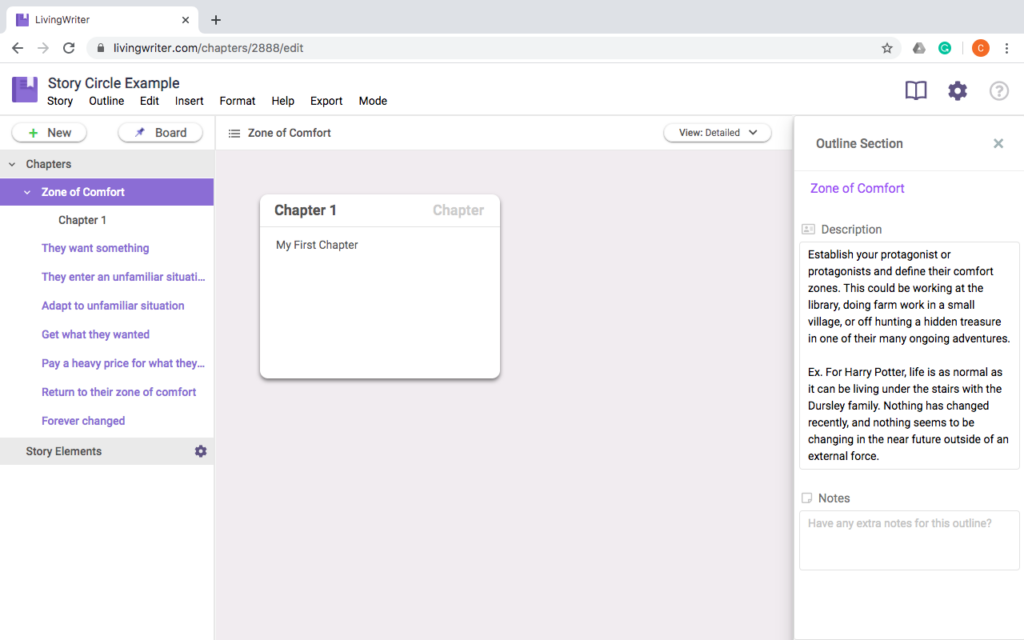
American writer Dan Harmon has not just gifted the great animated series Rick and Morty to the world, but also his story circle. The story circle is largely influenced by Joseph Campbell and his “hero’s journey,” simplified to be applicable to any story.
The story circle encompasses a narrative that we can find in all major myths, movies, and books. Dan Harmon believes that any good movie or book ever made can be used with the Story Circle. It is quite a bold and adventurous claim, but once you venture into the Story Circle, you’ll soon realize why.
The narrative is simple. A character starts in his home, ventures out to get something they need, and returns, having changed forever. Harmon lays these out in eight different plot points:
- A character is in a zone of comfort.
- They desperately want something.
- They enter an unfamiliar situation.
- They adapt to that unfamiliar situation.
- They get what they wanted after much effort.
- Knowingly or unknowingly, they pay a heavy price.
- They return back to their zone of comfort.
- They’ve been changed forever.
The difference between Harmon’s way of outlining and other ways of outlining like the Seven Point Story Structure is its intense focus on the development of the main character. The story circle is the perfect framework to work with if you are planning to make a dynamic main character.
The Cyclical Nature of Life
Why is it called the Story Circle and not the Story Line? Harmon explains that it’s because of the rhythms of biology, psychology, and culture. These eight steps can be plotted into a circle, indicating a cycle that is followed by any and all characters. They can be simplified into the transition of a character between two states: order and chaos.
The first step starts at the highest point of the circle, signifying the start as the peak of order. The following steps show the story progressing lower and lower into the lowest point of chaos, where the character is meant to be at his most vulnerable and weakest. The steps then continue back into the upward swing of the circle, representing the character’s struggle back into the peak of order, yet never the same as before.
Dan Harmon likens this process to the circle of life, where we also go through an evolution. We are often invested in this evolution, and this specific interest on change is intrinsic to us humans, as evolution was necessary for survival. By replicating the process of change into stories, we can create narratives that resonate easily to many people.
The Story Circle in Action
Let’s break down the story circle in the best way possible, using a blockbuster movie everyone (hopefully) has seen, The Lion King.
The Zone of Comfort
Simba is a young lion cub and heir to the Kingdom of Pride Rock. He lives a privileged life as a lion as well as a prince in his homeland.
The Desperate Need
Simba is eager to become King but also to prove himself to his father, Mufasa. He disobeys his father once, bringing his soon-to-be-wife to the elephant graveyard. He ends up embarrassingly rescued by his father from a pack of hyenas.
The Unfamiliar Situation
Simba’s father is murdered by a stampede staged by his uncle Scar. Simba is blackmailed by Scar to leave the Kingdom and has hyenas sent after him to hunt him down, until he has truly left Pride Rock.
The Adaptation
Simba escapes from the Kingdom and is rescued by a meerkat and a warthog, Timon and Pumbaa. These two teach Simba how to live and turn from his lion ways and refrain from hunting other animals.
The Coveted Prize…
Simba internalizes Timon and Pumbaa’s philosophy of “hakuna matata,” which means “no worries.” By abandoning his duties as prince and rightful heir to the Kingdom, he shies away from his trauma and lives contentedly with Timon and Pumbaa.
…and The Price that is Paid
Nala, Simba’s former betrothed, comes across Simba, now all grown up, and reveals to him the true state of the Pride Lands, withered and wasted under Scar’s reign. Nala convinces him to come back and take back the throne.
The Return
Simba gathers his courage after seeing a vision of Mufasa encouraging him to take his fate as the true King. Simba challenges Scar and defeats him, becoming the rightful King of the Pride Lands.
The Change
A few years pass and Simba and Nala have a cub of their own. The circle of life is re-emphasized and Simba has accepted his place in it.
We can see that the Story Circle clearly shows Simba and his development into becoming the King of the Pride Lands, as what he was supposed to be in the first place. However, his journey forced him to become better than what he could be if he has not undergone the chaos he had to go through. The necessitation of change through chaos often results into the development of better characters, and that is what the Story Circle embodies.
How to Use the Story Circle in LivingWriter
You might be giddy to get started on making a story circle for this one character that you’ve always had. Now that you’re armed with the knowledge, you can grab any piece of paper and start! Or, if you’re looking for a good springboard, check out LivingWriter’s Story Circle template.
See how to use it with the steps below.
1. Open LivingWriter. Choose the Story Circle template in the Templates section. This will prompt you to enter your story title and other optional details.
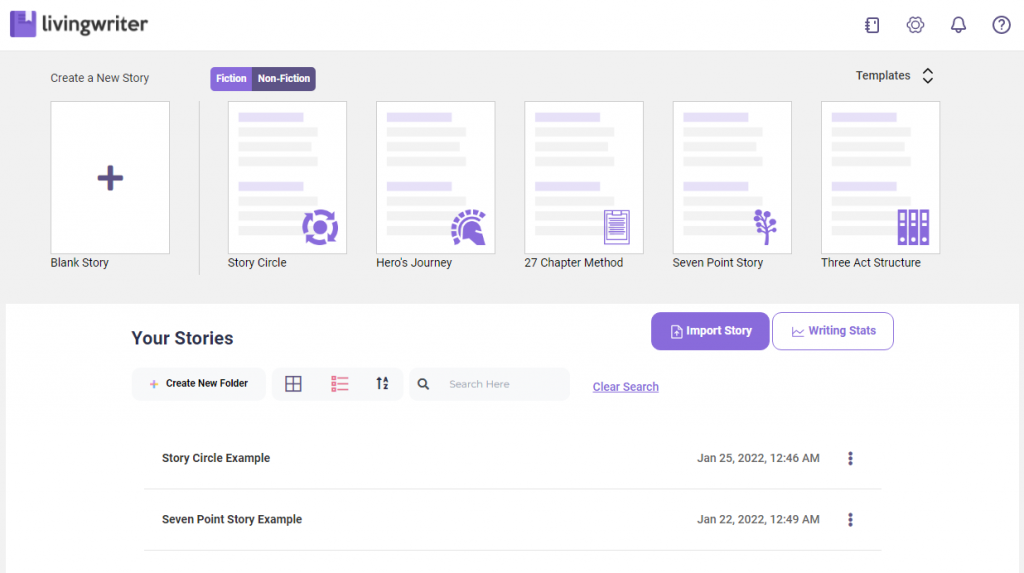
2. After confirming the details, you will see the main editing page of LivingWriter. You can see the left sidebar which contains your sections and chapters, the middle part which contains the editing document, and the right sidebar which contains information about the chapter/section.
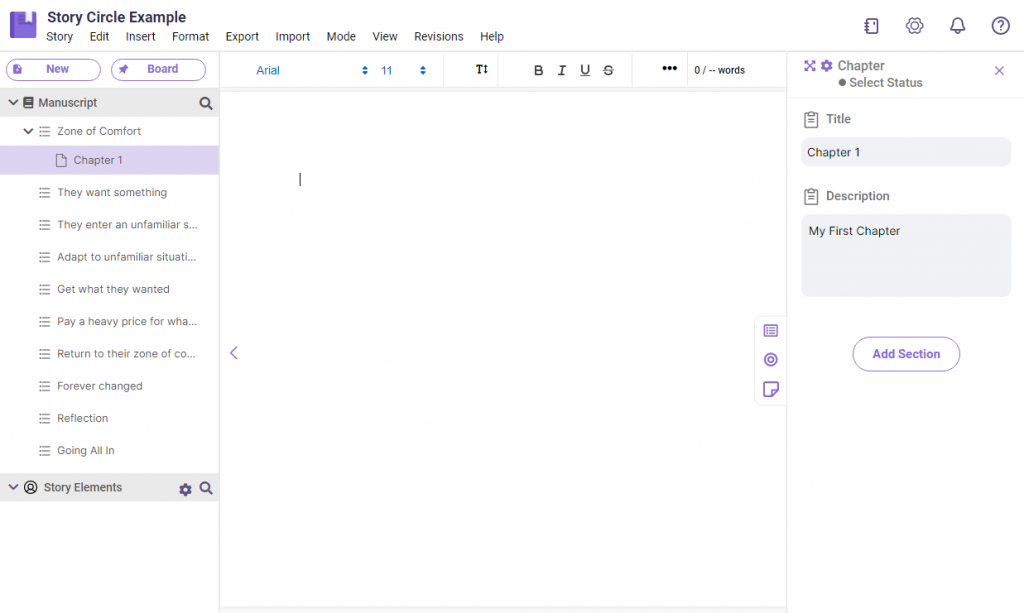
You can see the left sidebar pre-filled with the eight steps of the Story Circle, just as we discussed above. Clicking through them, you can also see the right sidebar also pre-filled for each step to guide you as you make your rough outline.
3. To get a better look of the overview of your outline, click the Board button in the left sidebar and then click Outlines and Chapters. This will change the editing document into the Board, which contains boxes pertaining to each step in the outline. You can now easily plot out your outline in this view.
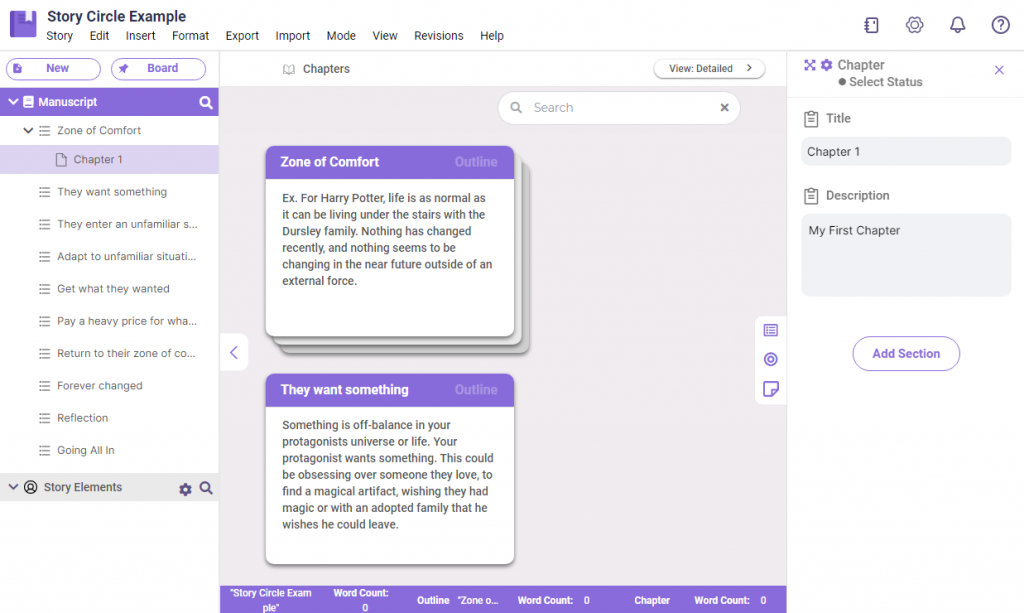
If you want to expand into chapters, you can click the upper-right corner of each box. If you want to get into writing right away, you can simply click on the chapter in the left sidebar.
What makes LivingWriter perfect with the Story Circle template is that LivingWriter also has this neat feature called Story Elements. Story Elements allow you to have notes specific for characters, settings, items, and other entities that might be important to your story.
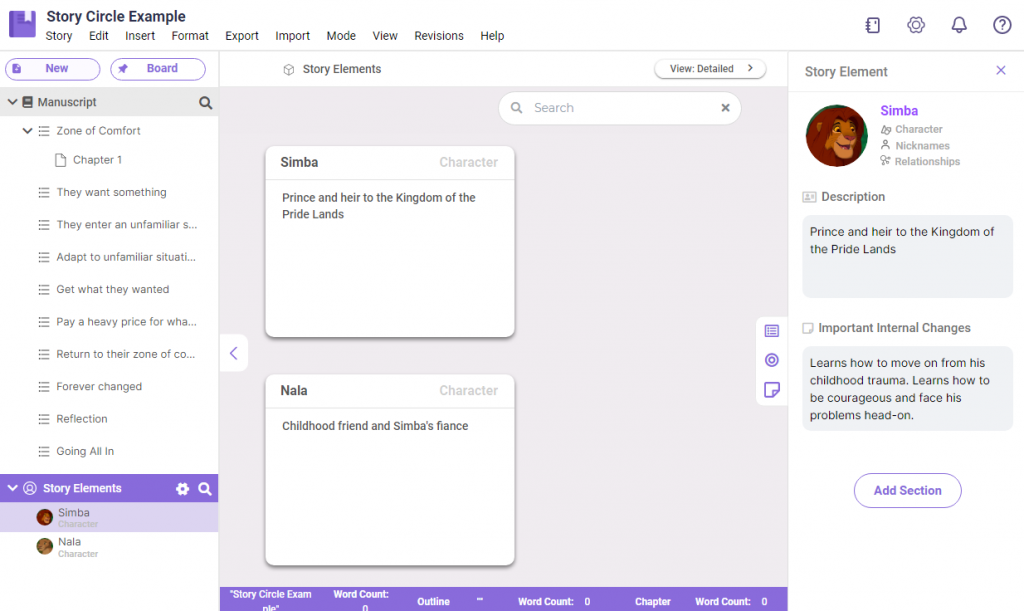
By creating Character Story Elements, you can have an entire section of notes dedicated to planning how they look, the important milestones they should achieve in the story, and other relevant details that you need to keep track of. You can even have relationship notes on each character, and every time you write their name on your manuscript, their character page will come out on the right sidebar.
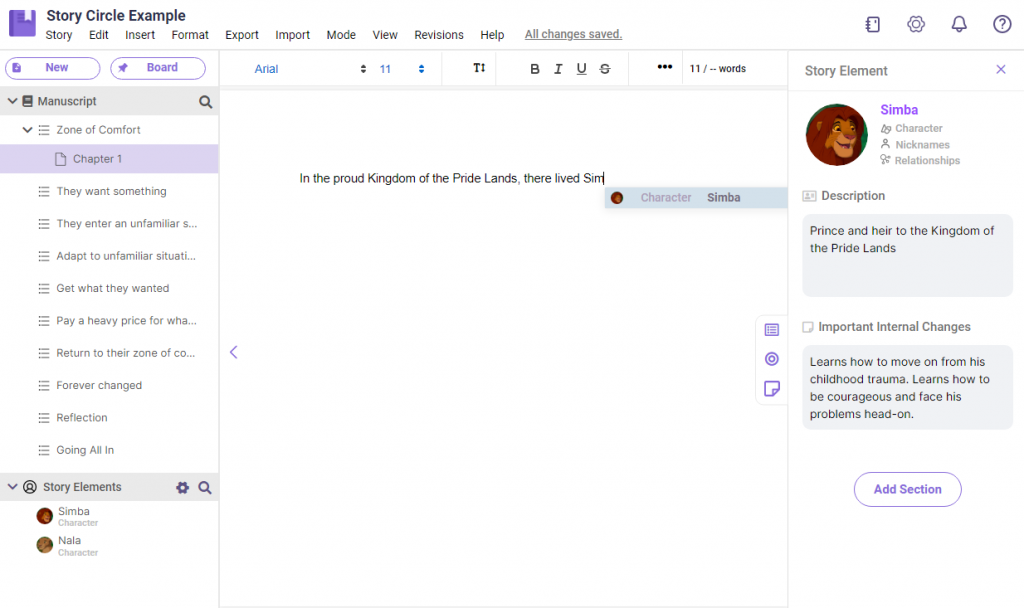
Conclusion
The Story Circle has helped many writers get a kick-start on their writing. It is also a great guide if you want to make a story that a lot of people will surely relate to. To have an easy time using the Story Circle, visit LivingWriter and select the Story Circle template to get started as quickly as possible writing your next best-seller.